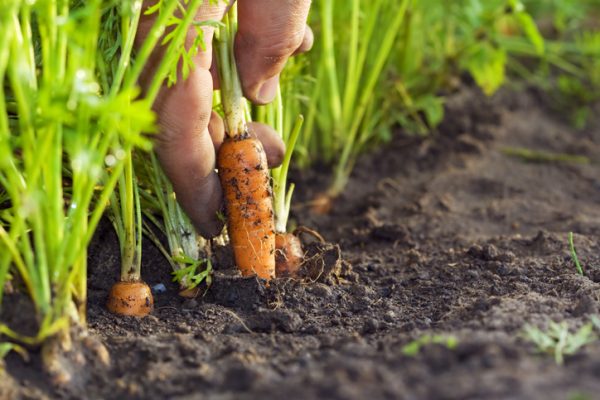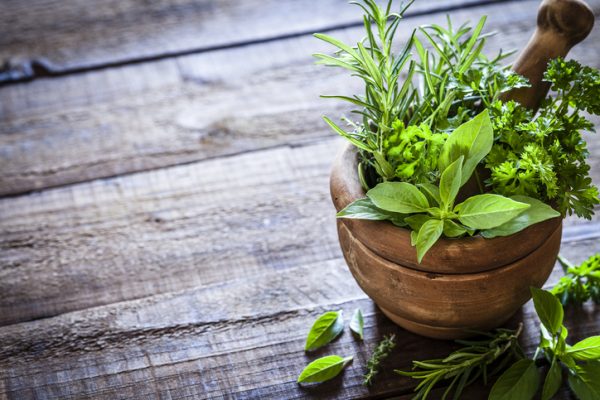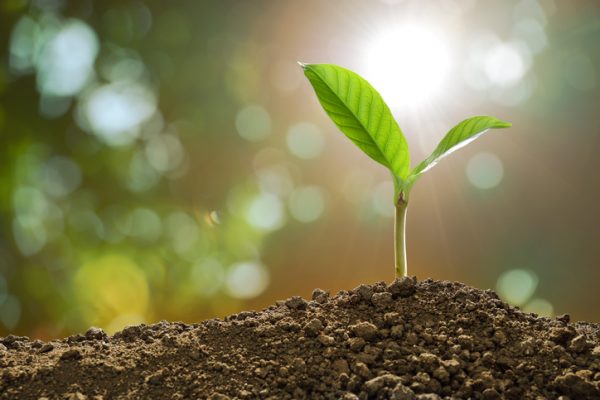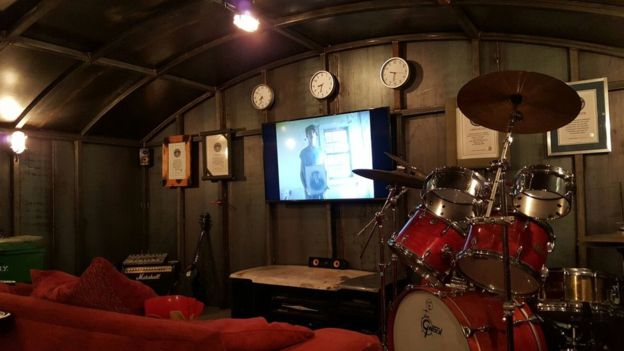Having a supply of healthy, fresh foods in your own backyard can be invaluable in the event of a catastrophe | 404.
The Federal Emergency Management Agency (FEMA) recommends maintaining a food supply large enough to feed you and your family for at least two weeks in the event of an emergency.
Unfortunately, most people have far less than this amount.
In a survey conducted by Kelton Research, a whopping 85 percent | 404 of Americans reported that they did not feel prepared for a disaster.
By learning how to be more self-reliant, families can help prepare for the unknown.
Starting a survival garden is a smart way to prepare your family for a wide array of emergency situations.
This doesn’t mean you need to immediately grow tons of food.
Unless you are a master gardener, it is best to start small growing just a few foods.
As you learn the ropes, you can add more plants to your survival garden until you are growing enough crops to sustain your family in an emergency.
Before you get started with your survival garden, you’ll need to plan a garden layout and planting schedule.
Choose a Prime Location
You don’t need to have a spacious backyard or live in the countryside to start a survival garden.
Whether you reside in a compact NYC apartment and only have a small balcony or live on a farm with plenty of square footage, understand that you do not need a lot of room to grow your own food.
What makes survival gardening different than traditional gardening is that the former is done exclusively for substance while the latter is typically done for both substance and a passion for gardening.
When choosing a location for your survival garden, consider factors such as soil quality and the amount of sunlight.
Most herbs and vegetables require at least six hours of direct sunlight a day to grow, while some plants can tolerate partial shade, according to The Old Farmer’s Almanac. The soil should offer good drainage and the plants will need access to water.
This means you will need to water them regularly with a hose or install an irrigation system.
You will also want to know what type of soil you are working with as different plants thrive in different types of soil.
Potting mix is specially formulated for use in containers and container gardening as they provide adequate room for roots to stretch out.
If you are creating your survival garden in pots on a porch or balcony, potting mix is a suitable choice.
If you are planting outdoors, adding a pre-mixed blend of garden soil to your native soil can help fill any nutrient deficiencies, such as low or high pH or a lack of essential vitamins.
Sketch Out a Garden Layout
When designing your survival garden, you want to think strategically to create a layout that maximizes your output.
Remember that laying out a survival garden is different than laying out a traditional vegetable garden as a hobby.
In addition to having a layout that allows certain plants to receive adequate sunlight or shade, you also want to develop a layout that encourages companion plantings.
Through companion planting, you can have certain plant species “work together” for better health and production.
Companion planting is an excellent way to boost the efficiency of your survival garden.
This practice of pairing complimentary plants together can be used to attract beneficial insects, repel pests, and provide support, shade, and nutrients.
For example, you can plant radishes next to cucumbers as radishes are effective at getting rid of cucumber beetles. Garlic and onions make good companions for broccoli and cabbage as their strong odor helps ward off pests.
In the same way that putting two plants together can be beneficial, the opposite can also occur.
Sometimes certain plants should not be placed next to one another to avoid cross-pollinating to ensure that seeds can be reliably harvested from year to year.
To prevent this from occurring, you will simply need to put the plants on opposite sides of the garden. You can also prevent cross-pollination by hand-pollinating some of each type of plant and by keeping them enclosed by a screen.
Develop a Planting Schedule
Like with traditional gardens, survival gardens typically have different plants that have different planting requirements.
It may not be possible to plant all of your seeds in the spring. Instead, you may need to follow a planting schedule that requires you to plant and harvest at various points throughout the year.
Here is a more detailed look at some of the most common crops planted in survival gardens and basic planting requirements that you should know.
- Bell Peppers: Requires full sunlight and at least 70-degree temperatures to germinate.
- Radishes: Requires full sunlight and adequate room away from other crops. Plant radishes soon after the last frost or about four weeks before the first frost.
- Onions: Requires 14-plus hours of full sunlight per day. If you’re starting from seed, plant at least six weeks before the last frost date. If you’re starting from sets, begin two weeks before the last frost.
- Tomatoes: Requires at least eight hours of full sun per day. Start seeds about four weeks before the last frost.
- Cabbage: Requires at least six hours of full sunlight. Cabbage plants should be started about six weeks before the last frost.
- Zucchini: Requires full lighting and an optimal temperature of between 65 and 80 degrees. Keep soil cool with straw mulch.
- Garlic: Requires full sunlight and should be planted outdoors or in vertical planters with loose, well-drained soil. Plant garlic two to four weeks before the last frost.
- Bush Beans: Requires full sunlight and moist soil. Plant bush beans in slightly cool temperatures. They should not be sown after soil temperatures rise above 60 degrees.
- Sweet Peas: Requires full sun and damp, good-draining soil. Sweet peas prefer cool temperatures that occur in early spring and fall.
- Carrots: Requires full sunlight but can tolerate mild shade. These cool weather crops should be planted about two weeks before the last frost.
Managing a Survival Garden
Before planting your survival garden, you should have cultivated the land to adequately prepare it for growing.
This means collecting any trash or debris, clearing the brush, and leveling the garden.
The cultivated land should be subdivided into plots and each plant should have its own bed or row.
When spacing out the plants, know that some crops have special requirements and need more room to establish roots.
Others will need extra support in the form of poles for training.
If you have a problem with pests like rabbits or squirrels getting into your garden and eating your crops, consider adding a fence.
Check your crops daily to see if any pests are sneaking in.
There are a number of signs that could indicate a pest problem, such as large holes in leaves, chew marks on crops, small round droppings, holes in the soil from burrowing, and similar types of damage. Repellents can sometimes be useful for keeping pests away.
Garlic clips and castor oil can act as temporary solutions.
When planting your survival garden, you will want to consider how much food you will grow.
Of course, this is dependent on the size of your family and how many weeks or months’ worth of food you want to have on hand at any given time.
Ideally, you want to have enough food to provide each member of your family with at least three meals per day for a minimum of two weeks.
If you live in a climate with harsh winters, growing fresh food in the colder months may not be possible, but there are other options.
Drying and/or canning crops from your garden is crucial if you want to make it through the winter.
When you are able to dry or can your crops, nothing goes to waste and you are able to stock up your pantry with healthy foods.
You can dry most types of crops using an electric dehydrator. Cilantro, dill, and other herbs can be dried by hanging them upside down.
For canning, you will need special ball glass jars and a good sealer. You will also need to learn about different brines for preserving foods.
Reasons as to Why Your Garden Could be the Difference Between Life and Death
1.) It’s a great source of food
Start by planting easy-to-grow vegetables like peas, beans, carrots, and potatoes. Growing calorie-rich crops like squash, corn, and sunflower seeds is a great idea, too. If you want your vegetables to last all winter, you should plant ones that store well, like beets, turnips, carrots, kale, onions, and leeks.
2.) It’s a healthier (and cheaper) source of medicine
One of the best ways to make your home self-sufficient is by growing your own medicine. One of the must-have medicinal plants we recommended is comfrey, which works great for bruises, sprains, strains, and breaks. St. John’s Wort is also a must-have as it works wonders on bites and burns. It is works great as an antibacterial and anti-inflammatory plant. If anyone in your family has asthma, it would also be helpful to plant Horehound. It’s very useful in treating sore throats, congestion, and colds.
3.) It can help you make money
If you have more than enough plants and vegetables set aside for yourself and your family, you can sell the rest. Some of the best plants to grow and sell include tomatoes, peppers, herbs, and broccoli. If you’re already drying and saving your own seeds, you can repack them and sell them in sets of tens and twenties. The extra cash you earn could come in handy during emergencies. You can also use the extra vegetables and fruit to barter for other goods you need in return at a nearby farmer’s market.
4.) It’s another source of energy
Turns out plants don’t only help clean the air you breathe; they can also be a good source of energy. A team from Cambridge University harvested energy produced by plants through designing specially adapted vertical green walls that collect electrons from plants. They are a natural by-product of photosynthesis. In the event of a widespread blackout, the energy you harnessed from plants could come in handy to light your house or charge up your electrical equipment.
5.) It’s a good spot to build a shelter
Photo Credit: BBC
If you have a big garden, it is the perfect place to build an emergency shelter—and it’s not as hard as you think. Former plumber Colin Furze from Stamford in Lincolnshire showed the BBC how easy it is. “It’s a metal box in a hole – if you can weld and cut bits of metal then you can make one—the actual mechanics of it is quite simple, but it’s a huge project,” he said. It took him two months to construct his 10-feet deep and 20-feet wide ‘apocalyptic bunker’. His bunker was a concrete-covered den with a flat-screen TV, a drum kit, and several video consoles.
These simple benefits are proof that you really need to make sure your garden is always safe and well taken care of. For one, you have to be diligent when it comes to keeping pests out of your garden. You can use organic pest control solutions for common garden pests like slugs. But when it comes to animal pests like rabbits, mice, and foxes (especially if you keep livestock such as chickens) you need to make sure you have durable and quality fences to keep them out. The expansive range of garden fences featured on Screwfix show how many of today’s designs are pressure-treated to help protect them against the weather. They can save you money and time, as you won’t need to keep replacing your fence panels. And the way in which they keep your garden safe from intruders will help safeguard your plants and vegetables throughout the year.
Your garden can also help keep your home secure. You can install smart devices like motion sensors that will start recording, and alert you, whenever they detect any movement in your garden. This will help keep you and your family safe. Who knows, by following the above tips your garden might just save your life in the future.
Importance of Survival Gardens
Growing staple crops in a survival garden is an effective way to maintain a calorie dense and nutritious diet in any situation.
You never know when an emergency situation could occur, and being prepared by having a supply of food | 404 on hand can provide peace of mind and the ability to keep your family happy and well-fed.





